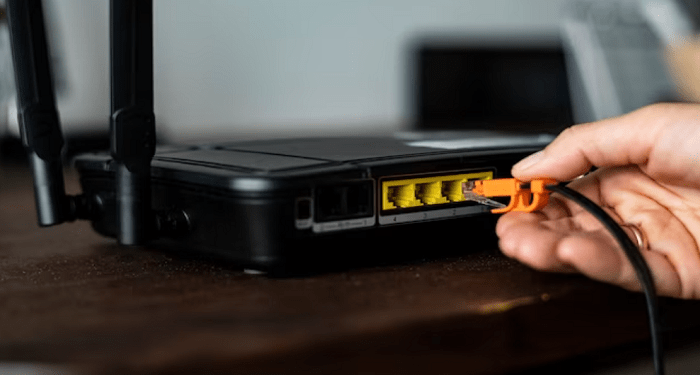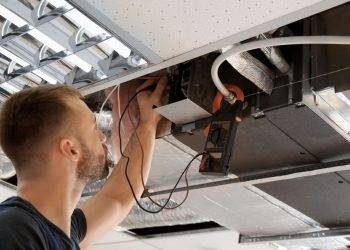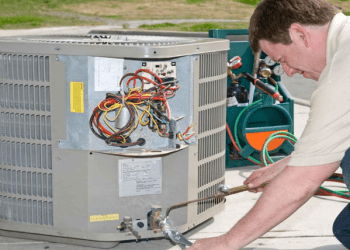In today’s economy, businesses continue to look for ways to save money while fostering growth. One of the more popular approaches, especially in light of the current digital advancement, is a buildout of the IT network toolset using Power over Ethernet (PoE) powered devices. PoE began as a way to connect local area network computers together in the 1990s. Over time, improved signal strength and quality have led the way to a compilation of useful technologies for the business environment. Take a look at five of the most common devices included in a PoE network and how they can offer advantages for your business.
What is a PoE Powered Device?
A PoE powered device, or PD, is a device that is connected to a network via copper Ethernet cable in the building. PoE cables can transmit both data and power at the same time, making it easier to deliver critical infrastructure to locations that might not otherwise be convenient to wire. As a result, businesses can receive cost savings and allow their devices to operate more effectively.
PDs are implemented by the end user after installing the appropriate network. They are supported through a PoE switch, an example of Power Sourcing Equipment.
The Top 5 Power Over Ethernet Powered Devices
There are several devices that are commonly used across business networks utilizing the PoE infrastructure.
Computers
Computers are some of the most common devices connected to PoE networks. PoE technology, including both injectors and switches, is safe for use with some computers. Keep in mind, however, that depending on the power your switch carries, you may not be able to connect all computers via your PoE network, since you may not have adequate power for their requirements. Connecting your computers via PoE can make it easier to add connectivity and computer access in areas you may not have been able to install those computers in the past, which can make it more convenient for you to move things around in the building or connect to areas where it might be more difficult to deliver new electrical wiring.
Security Cameras
Increasingly, many businesses are relying on security cameras to keep track of everything that happens in and around the business environment. Exterior security cameras serve as a theft deterrent and offer critical evidence in the event of a break-in or vandalism. Interior security cameras, on the other hand, offer deeper insight into what takes place inside the building. Not only can it help deter theft, but it also lets you know what people are doing inside the building. It can provide vital evidence in the event of a slip and fall or workers’ comp claim.
By utilizing your PoE network to install security cameras, you can easily transmit both the data from those cameras and the power needed to keep them running with ease. You can also, in many cases, install security cameras in locations where you might not previously have had wiring. With Ethernet and PoE connectivity, you need install only a single set of wires, rather than separate wiring to carry electricity and data.
High Powered Wireless Access Point
A wireless access point allows direct connection to your network from points throughout the building that might not otherwise have appropriate connectivity. High-powered access points can deliver nearly the same level of connectivity you would get from a direct tie-in to the network but allow the use of mobile devices. Today’s customers, employees, and vendors often bring their own devices into the business environment, whether they’re using a smartphone to help connect to vital internet resources or using a handheld scanner to deliver vital data. Wireless access points deliver a signal directly to those devices, maintaining the connectivity users need.
With your PoE network in place, you can power a wireless access point that can bring increased connectivity throughout the building. While you can plug many devices into your network directly, other devices rely on that WiFi connection. With a wireless access point connected to your network, you can have it all.
VoIP Phones
A VoIP phone uses IP technology to transmit phone calls: instead of using a traditional phone line, it relies on an internet connection to send and receive calls. VoIP phones are, in many cases, less expensive than traditional phone lines and may have fewer fees for things like international calls. Furthermore, with VoIP phones, employees can connect using the business number and line from anywhere they are, which means that employees working from home can more easily remain connected to the office. VoIP phones are also easier to scale than other types of phone lines and allow for a greater overall degree of flexibility, which can mean immense benefit for many offices.
Digital Signage
Depending on your business, you may have any number of uses for digital signs. They can display sales, keep customers informed about major events, or highlight products that you want to promote. Digital signs can also deliver key messages for employees, from highlighting the employee of the month to sharing critical announcements. In general, digital signs are often more efficient than traditional signs because they are easier to change out. As a result, you can shift your messages more often and with less waste than you would experience with traditional ads.
With your PoE network, you can easily carry both power and data to and from those digital signs, allowing you to quickly make any needed changes to them throughout the work week.
PoE Brings Enhanced Convenience and Connectivity to Your Network
With Power over Ethernet, you can more effectively connect devices across your network with less fuss. From retail stores to office environments, there are many uses for PoE devices—and the list doesn’t stop with these top five powered devices. Users may choose to connect facility monitoring controls, LED lighting and sensors, and so much more, all from the convenience of a PoE network.








